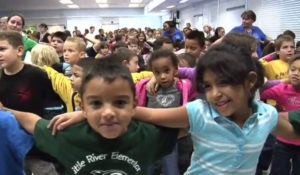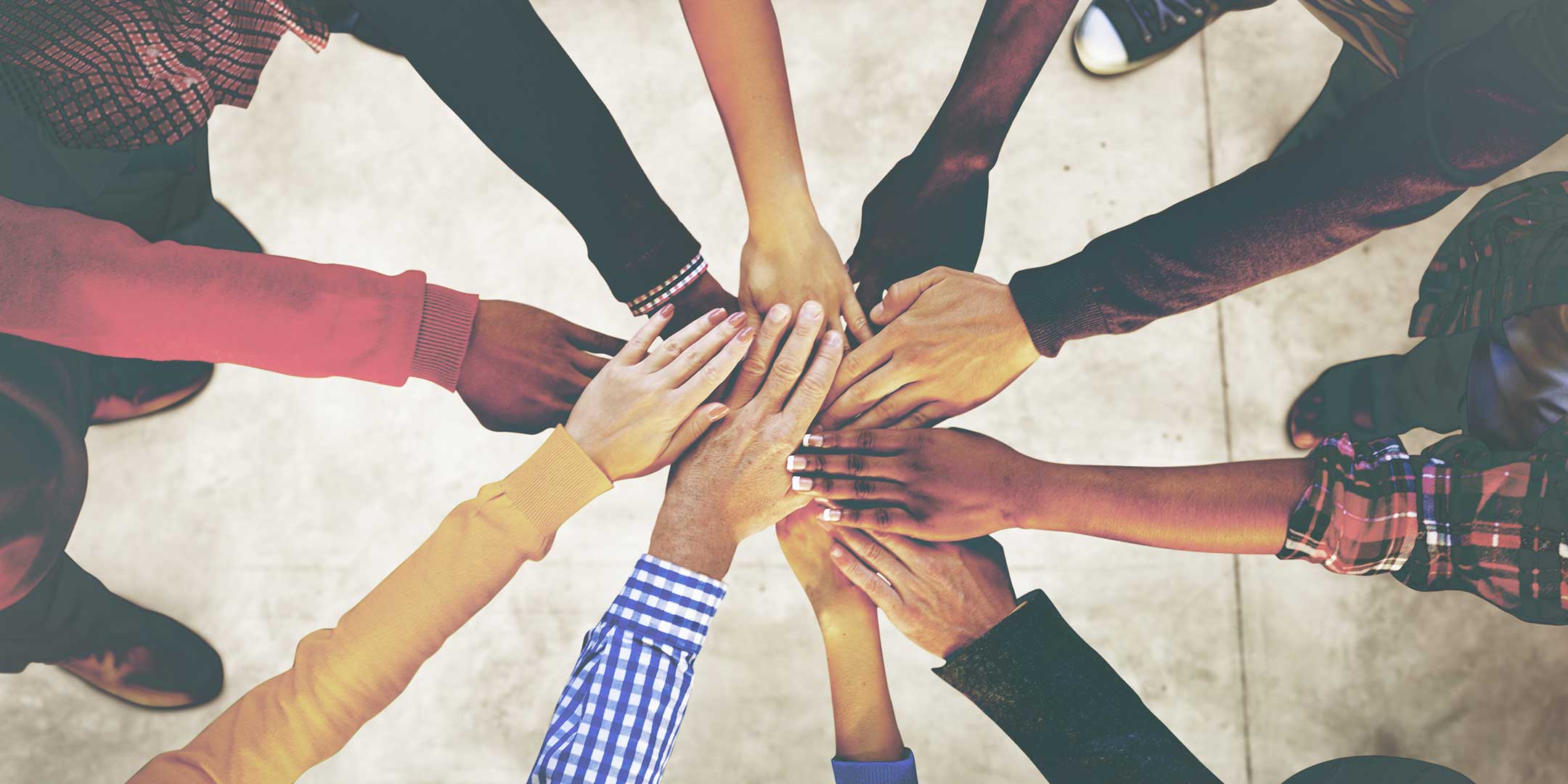Power of Unity

Big Idea: We are all in this together.
Goal: To create a compassionate culture called the School Family, realizing that what we offer to others, we experience within ourselves.
Skill: Encouragement
Structures: Connecting Rituals, Friends and Family Board, Ways to Be Helpful Board/Book, Kindness Tree/Kindness Recorder, Job Board
Join me for a life-changing journey through all Seven Powers, including the Power of Unity, in the new online course Powers of Resilience: Social Emotional Learning for Adults.
The Power of Unity says we are all interconnected. The importance of connection and compassion are key tenets of Conscious Discipline. Connection is an essential impulse that is needed for survival. It keeps us in an optimal brain state that facilitates learning and problem solving.
People have an innate desire to connect with others, form bonds, care, be empathetic and choose cooperation. In fact, this need is so great that ostracization and rejection physically hurt. The brain areas activated by social pain overlap with those activated during physical pain. When children experience rejection, the pain system comes on and shuts down the higher centers of the brain.
When shut down, children are unable to make healthy choices. Without the ability to self-regulate, they end up in an aggressive state where they may hurt themselves or others. Children must be connected before they can cooperate, learn and succeed.
According to the University of Exeter, the single most important predictor of health is the number of groups you belong to and the number of strong relationships you have. Practicing unity and connection is vital for our physical and emotional well-being.
The Science of the Power of Unity
The idea that we’re all connected is not some mystical notion. It’s science. We’ve all experienced this before: you feel someone looking at you, you sense the distress of a loved one, and you form instant connections with some individuals and not with others.
We also see it in nature, with synchronized schools of fish and migratory birds. And studies have consistently demonstrated that people are connected in the energetic field.
Humans emit electromagnetic waves that can be measured with devices like the electrocardiogram (EKG) and the electroencephalogram (EEG). The electromagnetic energy emitted by our brains can power a 10-watt lightbulb.
Research at the HeartMath Institute shows that at a conversational distance, the electromagnetic signals generated by one person’s heart can influence another person’s brain rhythms. Another HeartMath study found that a mother’s brainwaves can synchronize with her baby’s heartbeat. Many groups are studying the energetic field that connects us all, including The University of Arizona, Princeton, the International Institute of Biophysics, Cambridge University, and the Institute of Noetic Sciences.
It’s a fact that we are all affected by the thoughts and feelings of those around us. In addition, the quality of our relationships impacts how we perceive the world.
If one student in a classroom experiences rage and the rest of the class practices composure and empathy, the raging child will calm. The reverse is also true. If a teacher responds to the child’s rage by yelling, “Calm down!” and the rest of the class feels threatened, they will all end up in a survival state.
The stronger energetic vibration wins. This is the Power of Unity, and this knowledge shapes how we create our classrooms to help children.
Factory Model of Education (Separation)
Traditionally, schools have competitive, individualistic climates. We call this traditional model of education the factory model. The goal of a factory is to produce standardized widgets, discarding any that don’t fit the standard set by those in power. Schools built on the factory model operate the same way. Students are judged as either good or bad and are treated accordingly.
“Good” children are included in the group, treated with respect, seen as worthy, and given the benefit of the doubt when they misbehave. They are rewarded and perceived as special.
“Bad” children are excluded, deserve whatever it takes to put them in line, seen as unworthy, and are viewed as flawed when they misbehave.
Effects of the Factory Model of Education
In this climate, children’s intrinsic need for connection is often replaced with a drive to do better than others. For one person to be special, others must be less than. Children strive to be, have or do the best. Competition and comparison create a persistent state of stress, making it difficult for children to access skills for learning, problem solving and true connection with others.
Children who are persistently classified as “bad” often give up and seek validation through negative attention rather than connection. If they feel they’ll never be judged positively, they may strive for “specialness” by being the worst, being oppositional or shutting down.
They may also form their own connections in destructive ways. You may be familiar with DJ Batiste, who could not find connection at school and met this essential need by joining a gang. (If you know DJ, of course, you also know that he eventually connected with a teacher who changed his life.)
When schools build a culture of separation, children learn to value individual success and winning at all costs. They learn to ask, “What do I get if I’m good?” or, “How do I get you to __________?” They develop a scarcity mentality and feel that giving to others means losing.
In this factory model of education, children learn to divide people into “us” and “them.” Schools that seek to embrace diversity, yet utilize systems relying on specialness (such as rewards and punishments) will not reach their most valued goals. Instead, they will encourage children to forget that our true nature is the unity of “we.”
School Family Model of Education (Power of Unity)
In Conscious Discipline, the Power of Unity is expressed through the School Family, which is modeled after a healthy and interconnected family. The goal of an interconnected family is the optimal development of each person. The School Family believes we are all in this together, we can all make unique contributions to the group, and it’s important to connect with and care for one another.
Students are not judged as good or bad. Behaviors are classified as safe or unsafe. This distinction allows us to see misbehavior as a call for help rather than a sign of disrespect. As a result, we teach children the skills they need to make better (and safer) choices.
In the School Family, we teach students that they are both unique and united. We help children discover their unique gifts and how they can offer them to the whole. The focus is on giving, not getting.

Effects of the School Family Model of Education
The School Family has been proven to correct the life paths of disconnected, hurting children while encouraging all children to care for and contribute to others. This model leads children directly to a compassionate worldview.
As children learn to focus on giving, they rely on internal sources to provide a sense of worthiness, rather than looking for external validation. Instead of feeling the need to be “special,” they embrace their uniqueness and need to be of service.
We teach children to say, “I am unique because ____________, and it helps my School Family by ___________.”
In this culture of compassion, cooperation and connection, children learn to value win-win solutions that contribute to the welfare of all. They have an abundance mentality and understand that what they give to others, they also gain. They ask, “How can I give of my goodness to others? How can I be of service?”
The Power of Unity for Adults
If you’re familiar with Conscious Discipline, you know that we use an adult first, child second model. Since we can’t teach what we don’t know, adults learn the Powers and Skills before passing them on to children.
To build a School Family (or a Connected Home Family), you must start with yourself. Practice seeing past the beliefs and behaviors of others to view them as an extension of yourself. See the unity underlying us all. Shift from asking, “How do I get the world to go my way?” to, “How do I contribute to a better world?”
When you look at children, shift from asking, “How do I make the child behave?” to, “How can I help the child be successful?”
If we can see ourselves as connected, the idea of treating others poorly or seeking revenge becomes impossible. When we hurt others, we’re also hurting ourselves.
Final Thoughts: Power of Unity
Look at all the world’s religions, and you’ll see that they all call upon some version of the Golden Rule: Treat others the way you want to be treated. All religions point to a belief in oneness and compassion that says, “We are all in this together. When one is harmed, all are harmed. When one is helped, all are healed.”
This belief is the core of the Power of Unity, one of the foundational concepts of Conscious Discipline. It’s also at the heart of the School Family.
When we encourage separation and competition, we teach children that positive attention is better than connection and that negative attention is better than no attention at all. If we choose to emphasize unity, we can teach children to value contributing their unique talents for the betterment of others.
We can shift our view from scarcity to abundance, from getting to giving, and from separation to unity. In this way, we can build classrooms and communities on firm foundations of cooperation and compassion.
Next Steps
- Join me for in-depth online learning experiences about the Seven Powers and Seven Skills.
- View video examples of the School Family in action.
- Visit Shubert’s School or Shubert’s Home to see practical, room-by-room tips for Conscious Discipline implementation, along with photo and video examples.
- Download a free Wish Well Ritual Plan and Kindness Tree Structure Plan.
- If you’re new to Conscious Discipline, start with the foundational Conscious Discipline book.
More Helpful Resources for the Power of Unity
- Creating the School Family
- School Family Deluxe Pack
- School Family Job Set
- Conflict Resolution Time Machine




